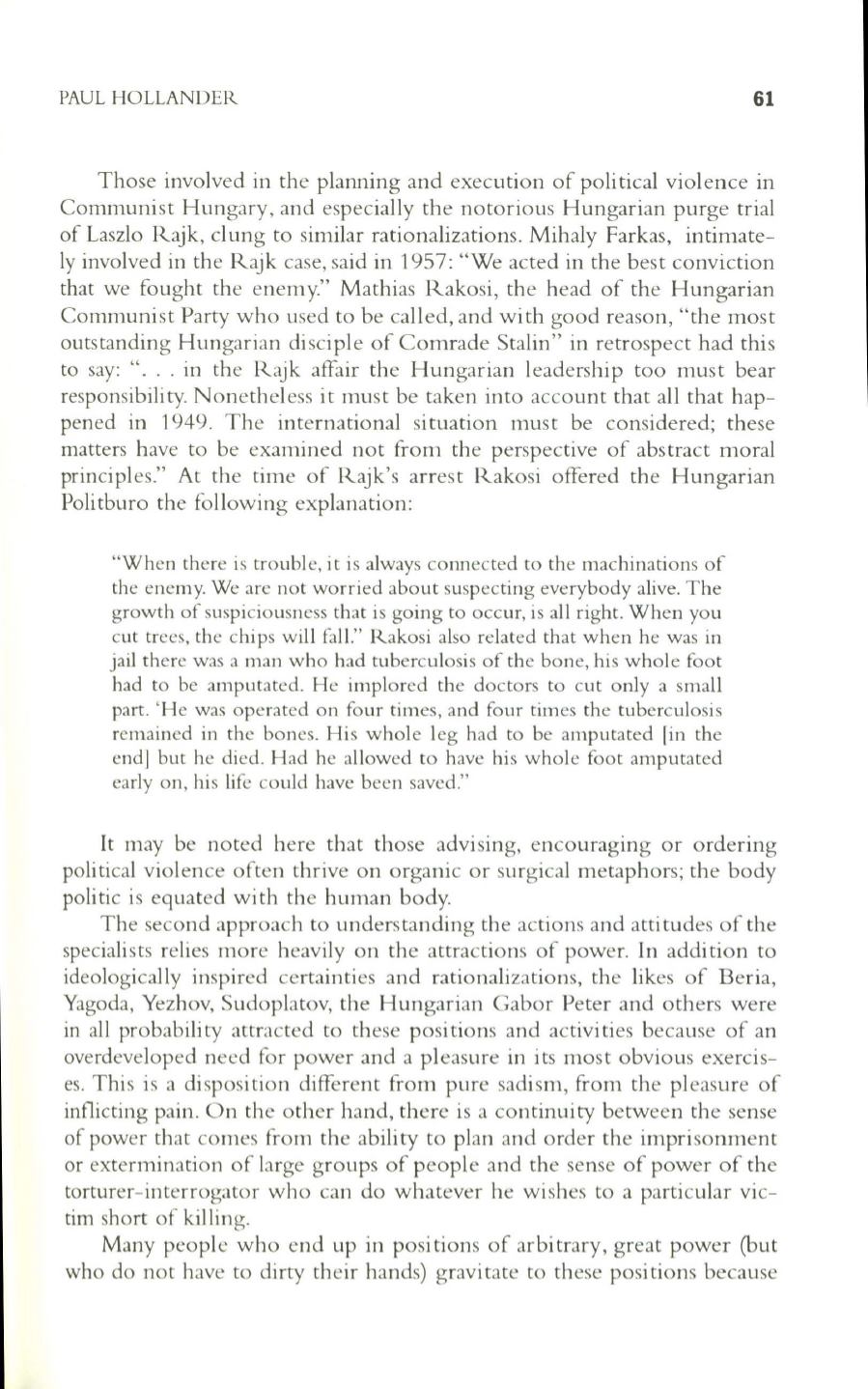
PAUL HOLLANDER
61
Those involved in the planning and execution of political violence in
Communist Hungary, and especially the notorious Hungarian purge trial
of Laszlo Rajk, clung to similar rationalizations. Mihaly Farkas, intimate–
ly involved in the Rajk case, said in 1957: "We acted in the best conviction
that we fought the enemy." Mathias Rakosi, the head of the Hungarian
Communist Party who used to be called, and with good reason, "the most
outstanding Hungarian disciple of Comrade Stalin" in retrospect had this
to say: " ... in the Rajk affair the Hungarian leadership too must bear
responsibility. Nonetheless it must be taken into account that all that hap–
pened in 1949. The international situation must be considered; these
matters have to be examined not from the perspective of abstract moral
principles." At the time of Rajk's arrest Rakosi offered the Hungarian
Politburo the following explanation:
"When there is trouble, it is always connected to the machinations of
the enemy. We are not worried about suspecting everybody alive. The
growth of suspiciousness that is going to occur, is all right. When you
cut trees, the chips will fall." Rakosi also related that when he was in
jail there was a man who had tuberculosis of the bone, his whole foot
had to be amputated. He implored the doctors to cut only a small
part. 'He was operated on four times, and four times the tuberculosis
remained in the bones. His whole leg had to be amputated [in the
end] but he died. Had he allowed to have his whole foot amputated
early on, his life could have been saved."
It may be noted here that those advising, encouraging or ordering
political violence often thrive on organic or surgical metaphors; the body
politic is equated wi th the human body.
The second approach to understanding the actions and attitudes of the
specialists relies more heavily on the attractions of power. In addi tion to
ideologically inspired certainties and rationalizations, the likes of Beria,
Yagoda, Yezhov, Sudoplatov, the Hungarian Gabor Peter and others were
in all probabili ty attracted to these posi tions and activi ties because of an
overdeveloped need for power and a pleasure in its most obvious exercis–
es. This is a disposition different from pure sadism, from the pleasure of
inflicting pain. On the other hand, there is a continuity between the sense
of power that comes from the ability to plan and order the imprisonment
or extermination of large groups of people and the sense of power of the
torturer-interrogator who can do whatever he wishes to a particular vic–
tim short of killing.
Many people who end up in positions of arbitrary, great power (but
who do not have to dirty their hands) gravitate to these positions because


